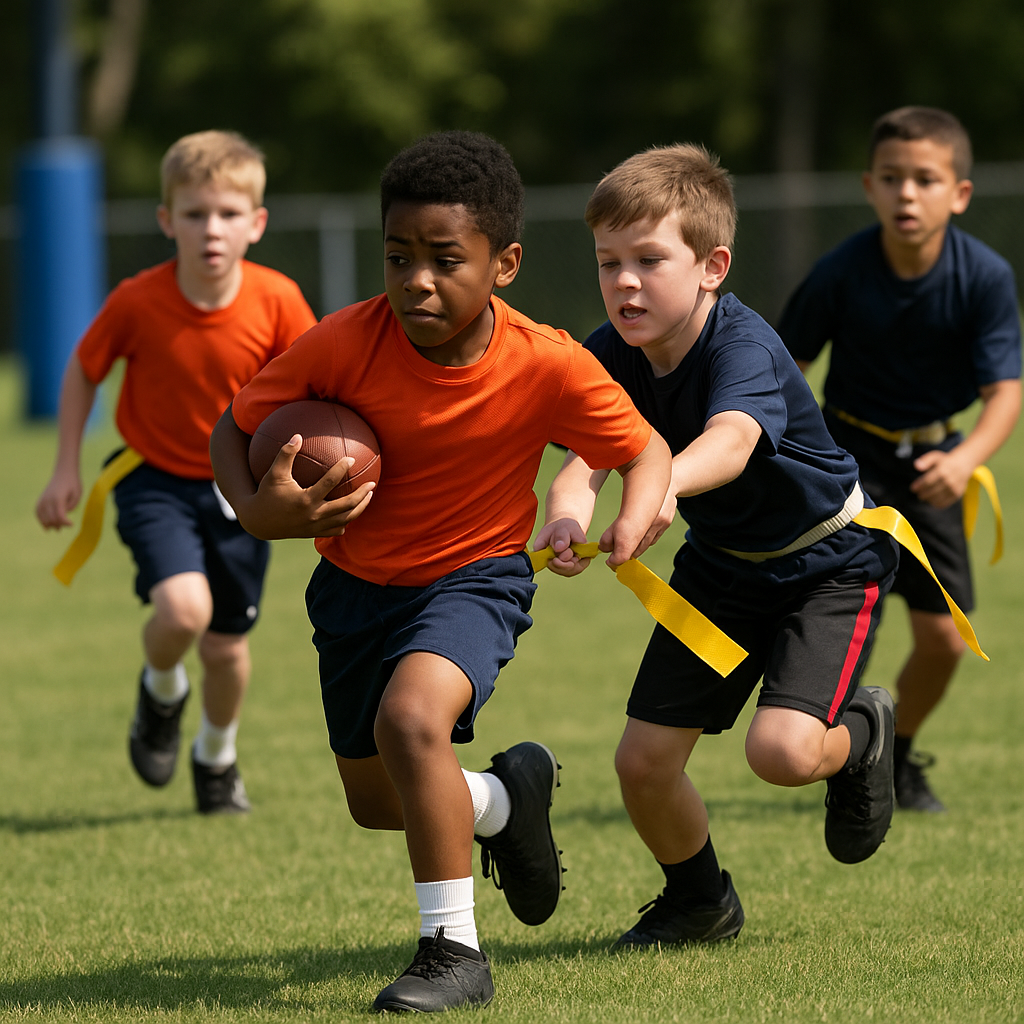Flag football is a fast-paced, non-contact sport that relies on skill, speed, and technique rather than physical tackling. One of the most essential defensive skills in flag football is flag pulling-the act of stopping an offensive player by removing a flag from their belt. While it may seem straightforward, effective flag pulling requires good positioning, hand-eye coordination, and awareness. Here's a breakdown of the fundamentals to help players improve this crucial skill.
1. Understand the Objective
In flag football, defenders stop the ball carrier by pulling a flag from their belt, not by tackling. A successful flag pull:
- Ends the play immediately at the spot where the flag was removed.
- Prevents the ball carrier from gaining additional yards.
- Must be clean and not involve grabbing clothing or physically restraining the player.
2. Maintain Proper Positioning
Good flag pulling starts before you even reach for the flag.
Stay Low and Balanced
- Keep a low center of gravity with knees bent and feet shoulder-width apart.
- This helps with quick changes in direction and stability.
Square Up the Ball Carrier
- Approach the ball carrier head-on when possible.
- Avoid lunging or overcommitting, which can lead to missed pulls or being juked.
3. Use Your Hands Efficiently
Flag pulling is all about timing and precision with your hands.
Focus on the Flag, Not the Ball
- Watch the player's hips, where the flags are attached—not their upper body or feet.
- Avoid reaching too early or swinging wildly.
Two-Hand Technique
- Use both hands when possible to increase your chances of pulling a flag.
- This also helps if one hand misses or if the player spins away.
4. Close the Distance with Control
Don't rush blindly at the ball carrier.
Break Down Your Steps
- Slow down as you approach the ball carrier to maintain control.
- Take short, choppy steps to react quickly to cuts or spins.
Avoid Overpursuing
- Stay on your toes and mirror the ball carrier's movements.
- Keep an angle that "cuts off" their route instead of chasing from behind.
5. Practice Flag Pulling Drills
Repetition builds muscle memory. Some helpful drills include:
- 1-on-1 Flag Pulling: Practice flag pulls in a controlled environment with a partner.
- Mirror Drills: Work on mirroring a ball carrier's footwork while staying balanced.
- Angle Pursuit Drills: Practice closing distance from different angles without overcommitting.
6. Play with Awareness
Game situations require more than just mechanics.
- Know where the sideline is-use it as an extra defender.
- Call out pulls clearly and immediately to alert officials and teammates.
- Be ready for laterals or pitches-don't relax after a flag is pulled until the play is truly over.
7. Stay Disciplined and Legal
Avoid penalties by following proper flag pulling etiquette:
- Don't grab shirts or belts.
- Don't use excessive force or block the runner with your body.
- Don't yank flags before the ball carrier has the ball (anticipation fouls).
Conclusion
Mastering the fundamentals of flag pulling is critical for any flag football defender. With consistent practice and attention to detail, players can become reliable defenders and game-changers on the field. Whether you're a beginner or looking to sharpen your skills, refining your flag-pulling technique is a great way to elevate your game and help your team succeed.
